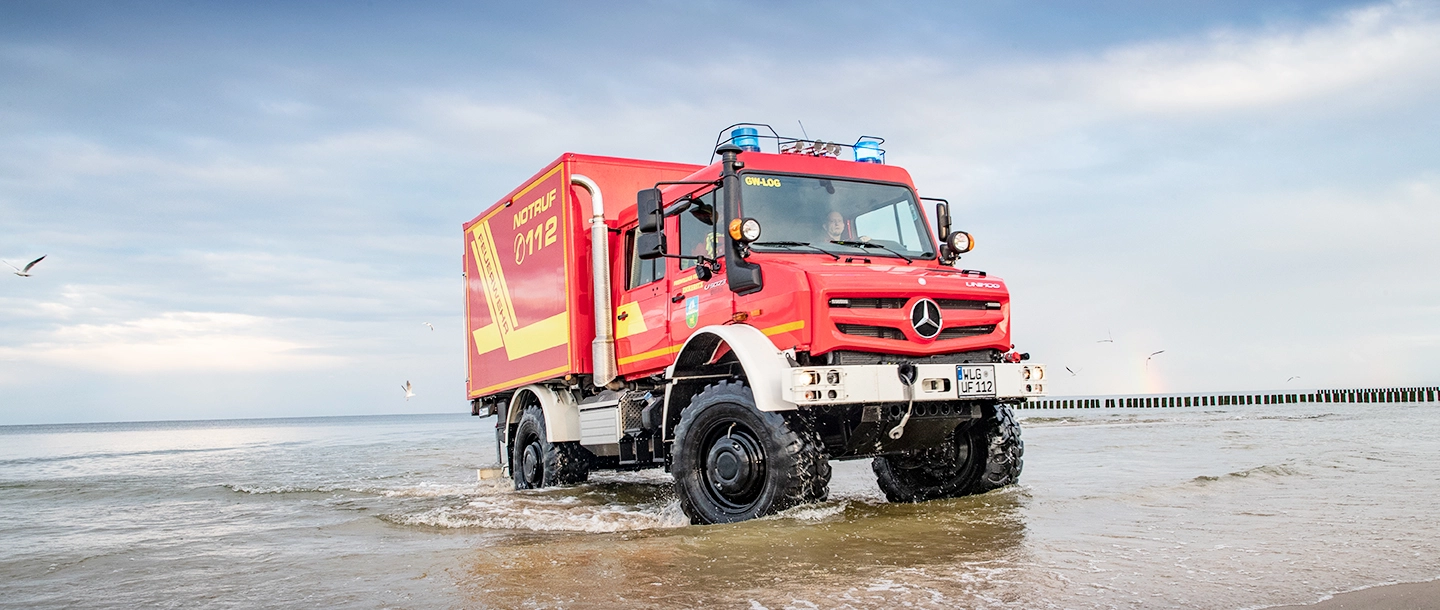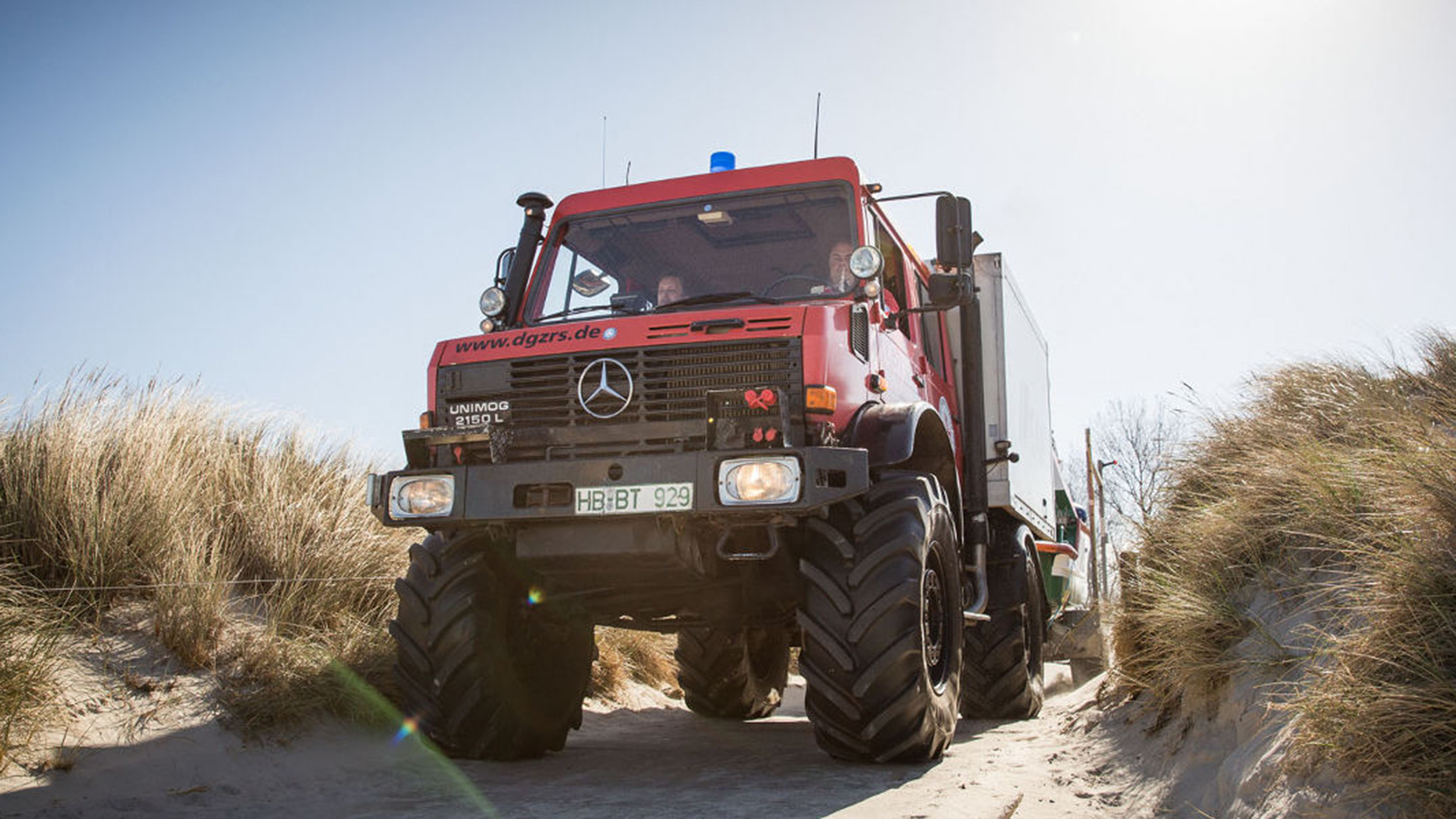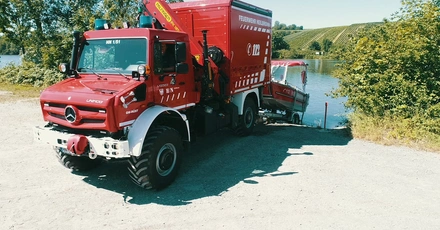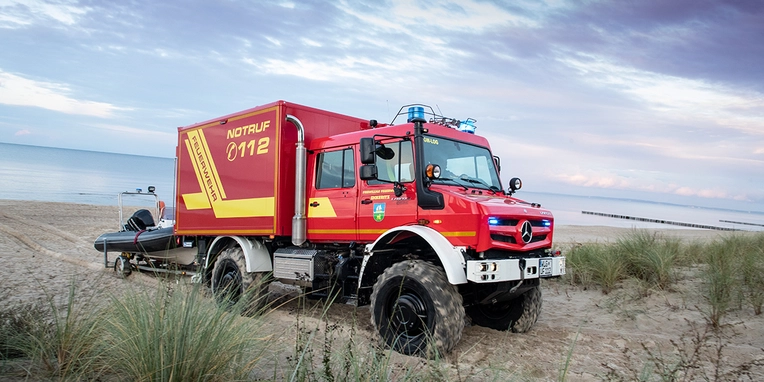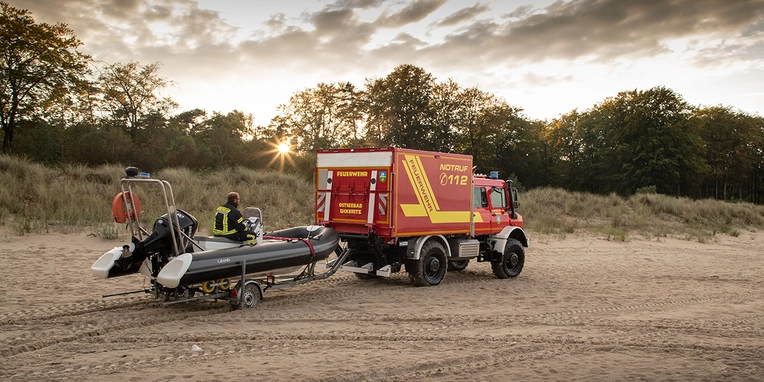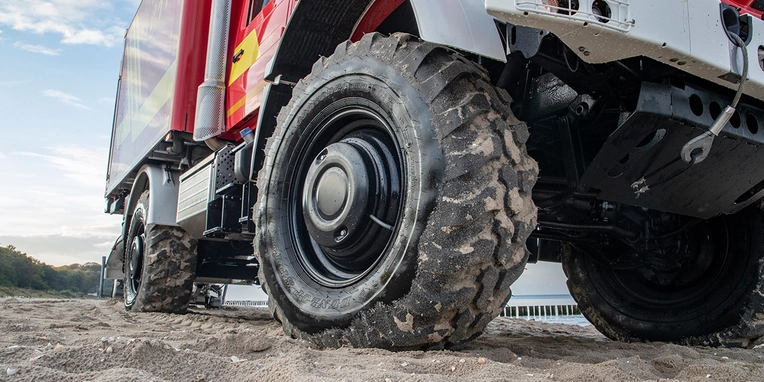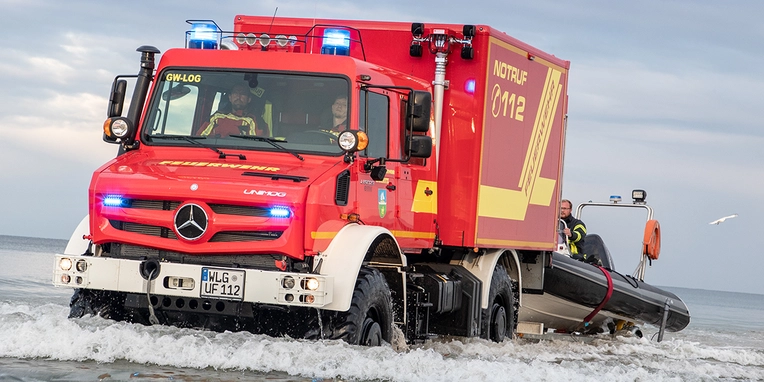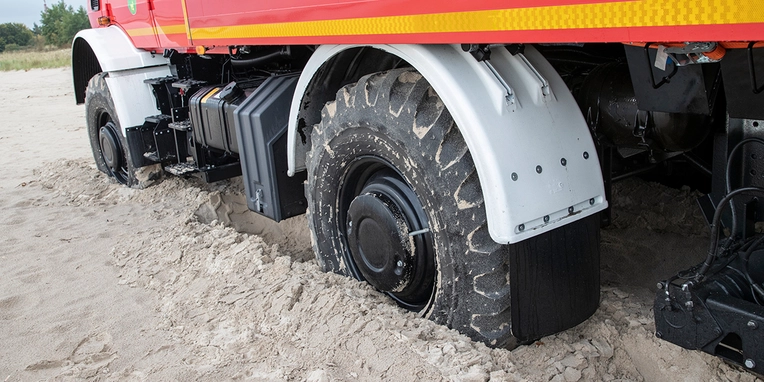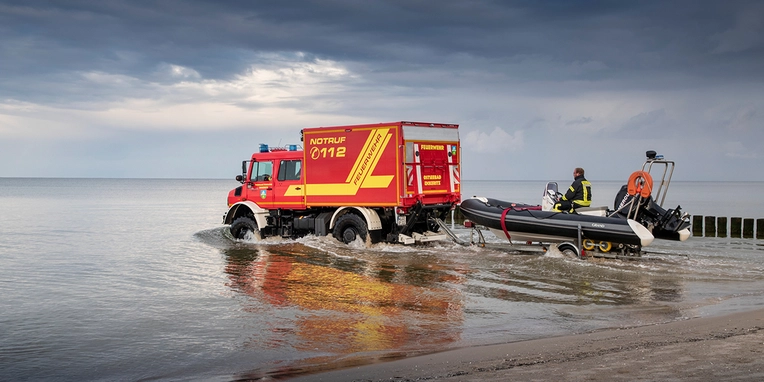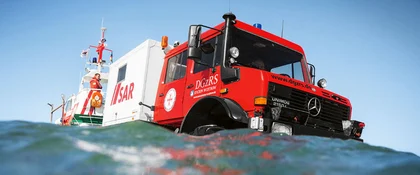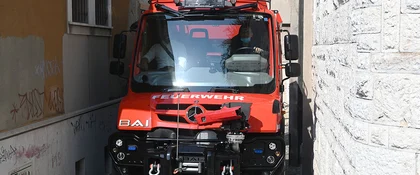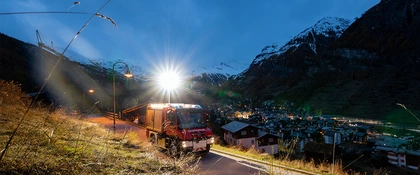Special equipment for rescue operations.
Items of equipment such as a raised exhaust and air intake as well as an additional coating to protect against salt water were added to the specification list. As was the fully automatic tyre pressure control system, 455/70R24 studded tyres and a hydraulic Rotzler cable winch with a 40 m working cable length.
The permanently installed light mast can be extended to a height of five metres. On-board, there is space for six firefighters. In addition to the driver, the crew's commander, a rapid-response team, a water team and – depending on the situation – even a boat pilot can travel in the Unimog at the same time. When the alarm is raised to search for a person missing at sea, the Unimog also tows a special trailer carrying a 5.50-m-long rubber boat with a 90 hp outboard motor.
In the end, there's just no other vehicle which can be used as universally and which is as good off-road as the Unimog
Thomas Labahn, Chief Firefighter, Ückeritz Volunteer Fire Department
The logistics professional is always there.
But it isn't just the fact that the Unimog can be used on the beach that make it an attractive choice of vehicle. "We helped design the body in a particularly flexible way," says Thomas Labahn. Bodybuilder Parkentin supplied the body while the five different roller containers were manufactured by Günzburger Steigtechnik. In just three and a half minutes, these can be swapped around as appropriate for the specific operations to which the vehicle is called out.
If there is a fire, the permanently installed hose system with 16 B hoses is used. When operating double-crewed, a reel length of 350 m can be put together in no time at all. Plus, with the additionally available hose transport trailer, a further 750 m can be carried along with ease. A hygiene container as well as a container with special equipment for vegetation fires are also expected to be available in the near future.
As a "logistics equipment vehicle", the Unimog always turns out for every shout. And there's a simple reason for that: you often only get the full picture of what's happening when you arrive on the scene.
